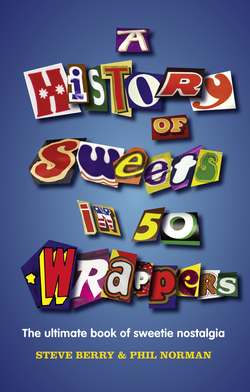Читать книгу A History of Sweets in 50 Wrappers - Steve Berry, Phil Norman - Страница 17
ОглавлениеCadbury’s make with the ‘miles of chewy toffee.’ Curly Wurly (1970).
CURLY WURLY
Cadbury entered the 1970s in a reflective mood. Mars was the problem. Mars’s big-hitters – filled bars in the Marathon, Mars or Milky Way mould – were cleaning up, while Cadbury’s sedate blocks were primarily successful with only the older, and significantly less impulsive, customer. No one bought and scoffed three bars of Fruit ‘n’ Nut in an afternoon break. (Or at least, if they did, they kept quiet about it.) Cadbury already had the Crunchie under Fry’s imprimatur, but recent innovations had met with varied results. Their best shot was the Aztec, but even that was losing to the celestially named behemoths from Slough. Cloning Mars products was a fool’s errand, so Cadbury’s technicians started thinking outside the bar. One outlandish design, a braided lattice of three caramel laces, seemed to fit the bill. A pleasingly wacky shape inside, and it dwarfed its rivals on the shelves by dint of sheer scale: as Malcolm Tucker reminisced in The Thick of It, ‘the size of a small ladder’.
This was the confectioner’s Holy Grail: give them less, but convince them it’s more. It worked a treat. A focus group of 100 children were given a bar to munch, then asked if they’d rather have a sixpence or another Curly Wurly. Only seven plumped for the cash, but history doesn’t record whether that was due to the new bar, or the knowledge that, with decimalisation round the corner, chocolate was probably a better investment than a moribund tanner.
